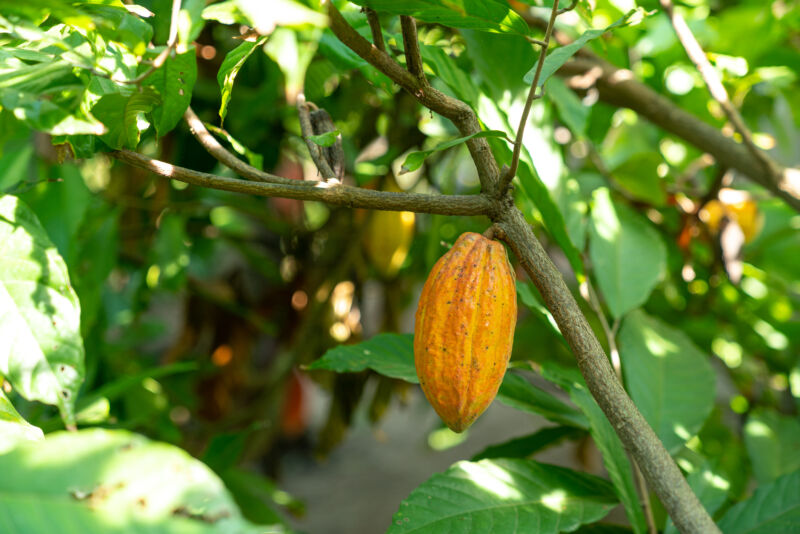
[ad_1]

Cocoa farmers in Ghana and Côte d’Ivoire make less than a dollar a day. And there are almost 2 million of them; the two countries are the world’s largest cocoa producers, supplying two-thirds of the global supply. Cocoa is the primary perennial crop in both places.
However, there are no up-to-date, accurate maps of their cocoa plantations. This is a problem since cocoa is known to be a primary driver of deforestation in the region. Besides decimating biodiversity that may never recover, clear-cutting forests to plant cocoa (or for any other reason) makes it hotter and makes storms stronger, both locally in Africa and across the planet.
So a team of European researchers made a deep neural network to collate publicly available satellite images of both countries with georeferenced cocoa farms, identified by their regular polygons. They then had a team in Côte d’Ivoire trekking around for three months to visit the farms and verify their results.
They found that in the densest cocoa-growing regions, about 40 percent of the land is planted with the crop, and little or no native forest is left. About 5 percent of the protected areas in Ghana and almost 15 percent of the protected areas in Côte d’Ivoire have been converted to cocoa farms—almost 30 percent of the cocoa farms in Côte d’Ivoire are in these protected areas.
They calculate that cocoa is directly responsible for almost 40 percent of the deforestation in these protected areas—about 1.5 million hectares of forest gone since 2000. An analysis of plant health shows that the cocoa plants aren’t even doing that well, and yields are lower than officially reported.
The authors describe the cocoa supply chain as “rather opaque,” which is a euphemism for “totally sketchy.” Deforestation is almost the least of it; drug running and child slavery are also involved.
This work definitely has somewhat uncomfortable shades of colonialism; the European researchers undoubtedly have good intentions in wanting to save the forests, and the forests absolutely do need to be saved, but the African farmers and their families also need to eat. As the authors note, “Clearing natural forests to establish new cocoa farms provides farmers with temporarily fertile land and thus higher yields and more income in the short run.” Hopefully, after coming home from a day of analyzing their surveillance data, the researchers are at least shelling out a fair price for a responsible bean-to-bar fix instead of underpaying for the mass-produced cocoa they spend their time tracking.
Nature Food, 2023. DOI: 10.1038/s43016-023-00751-8 (About DOIs).
[ad_2]
Source link